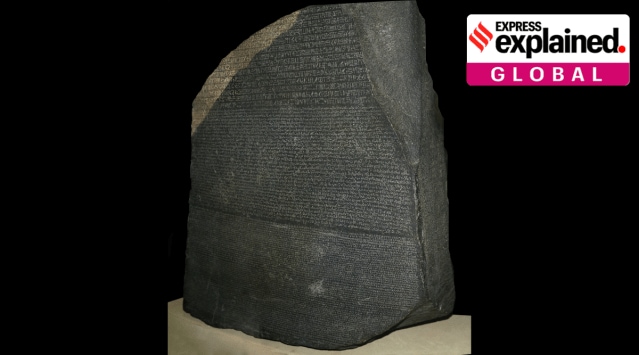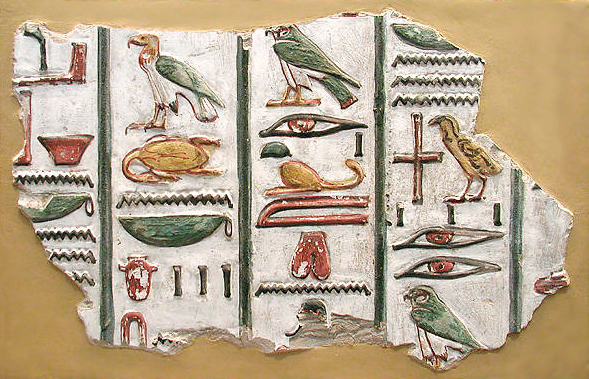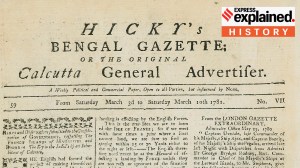- India
- International
Why Egypt historians wants the UK to return the 2,000-year-old Rosetta Stone
The Rosetta Stone is the British Museum’s most visited object and has been critical to modern knowledge of ancient Egypt. Here is why.
 Before the Rosetta Stone was found, there was no knowledge of what Egyptian hieroglyphs exactly meant and how they were translated. (Photo via Wikimedia Commons)
Before the Rosetta Stone was found, there was no knowledge of what Egyptian hieroglyphs exactly meant and how they were translated. (Photo via Wikimedia Commons)An object that helped create a new domain of history, is referenced in the name of an Apple translation software, and is the most-visited item at the British Museum is at the centre of demands by historians in Egypt. According to a Reuters report, the UK is being asked to return the Rosetta Stone, a large stone slab that has fascinated the world since its discovery around two centuries ago.
The calls also reflect the growing acceptance towards the idea of Western countries returning historically and culturally important artefacts taken largely from the global South during the colonial era. Many such objects are housed in various museums or owned by private collectors in the West.
Monica Hanna, acting Dean of the College of Archaeology in the Egyptian city of Aswan, told Reuters, “I am sure all these objects eventually are going to be restituted because the ethical code of museums is changing, it’s just a matter of when.” She added, “The stone is a symbol of cultural violence, the stone is a symbol of cultural imperialism.”
What is the significance of the Rosetta Stone?
The Rosetta Stone is a large stone slab with inscriptions on it and is believed to be a piece of a bigger rock. It has inscriptions in three scripts, all of which convey a decree or public message. This is similar to how in Ancient India, King Ashoka ordered stambhas or edicts that had messages of Buddha’s teachings and news about victory in a war inscribed. These were then placed throughout the kingdom for the public to see.
 Fragment of a wall with hieroglyphs, a pictographic method of writing in ancient Egypt, from the tomb of Seti I (reign c.1294 or 1290 to 1279 BC). (Photo via Wikimedia Commons)
Fragment of a wall with hieroglyphs, a pictographic method of writing in ancient Egypt, from the tomb of Seti I (reign c.1294 or 1290 to 1279 BC). (Photo via Wikimedia Commons)
The Reuters report mentioned that when the representatives of the British Museum were contacted regarding the Stone’s return, they said that of the 28 stelae or stones with inscriptions of the same decree discovered afterwards, 21 remain in Egypt.

“The British Museum greatly values positive collaborations with colleagues across Egypt,” said the statement from a spokesperson.
But as the museum’s own website states, the inscriptions themselves are as not important. “The Rosetta Stone is one of these copies, so not particularly important in its own right. The important thing for us is that the decree is inscribed three times, in hieroglyphs (suitable for a priestly decree), Demotic (the cursive Egyptian script used for daily purposes, meaning ‘language of the people’), and Ancient Greek (the language of the administration – the rulers of Egypt at this point were Greco-Macedonian after Alexander the Great’s conquest”.
Therefore, the Rosetta Stone stands out for being the discovery that helped develop the specific field of ancient Egypt studies, Egyptology. Before it was found, there was no knowledge of what Egyptian hieroglyphs meant and how they were translated. But as the stone conveyed the same information in three languages, including Ancient Greek that was understood by scholars, information on hieroglyphics was finally within the grasp of modern historians.
How did the Rosetta Stone reach Britain?
According to the British Museum, the engraving was done during the reign of King Ptolemy V who ruled from 204–181 BC. This puts the stone’s age at well over 2,000 years. It is believed to carry messages by some priests in support of the king. With time the stone, among other inscriptions, was displaced.
This stone was ‘rediscovered’ in the time of French king Napoleon Bonaparte, who launched a campaign in Egypt from 1798 to 1801 “with the intention of dominating the East Mediterranean and threatening the British hold on India”, as per the Museum website. While details of its discovery are vague, it is said to have been found by Napoleon’s soldiers accidentally in 1799 in the city of Rashid (called Rosetta by the French) in the Nile Delta.
On Napoleon’s defeat later at the hands of the British, the Treaty of Alexandria (1801) led to its transfer and it has been at the British Museum since then.
Is there a possibility of the stone’s return to Egypt?
While this current request is not backed by the government officially, such calls have been made before.
Dr Zahi Hawass, an Egyptologist and former Minister of State for Antiquities Affairs in Egypt, has repeatedly demanded the return of the Rosetta stone to Egyptian museums. He also modified this demand later and suggested that Britain loan the stone to Egypt for a few months, but the plan did not go through.
Often, the argument is that some countries might be unable to care for or hold onto high-value items. Dr Hawass told the BBC in 2009 that the response from some museums had been “not good”, and they questioned if it could be guaranteed that the artefacts would be returned at the end of the loans. “We are not pirates of the Caribbean. We are a civilised country. If I sign something I will do it…We have the right for our monuments to be shown,” he said.
However, a few requests have been getting approved of late by museums. According to a Reuters report, London’s Horniman Museum said in August this year that it would return 72 artefacts, including the Benin Bronzes that were looted from Benin City by British soldiers in 1897, to the Nigerian government.
Scotland’s Kelvingrove Art Gallery and Museum also signed a similar deal with India in the same month, which was “thought to be the first repatriation to India from a UK museum”, the BBC said. The seven items included 14th Century carvings and 11th Century stone door jams, that were stolen from shrines and temples in the 19th Century.
More Explained
EXPRESS OPINION
May 04: Latest News
- 01
- 02
- 03
- 04
- 05







































